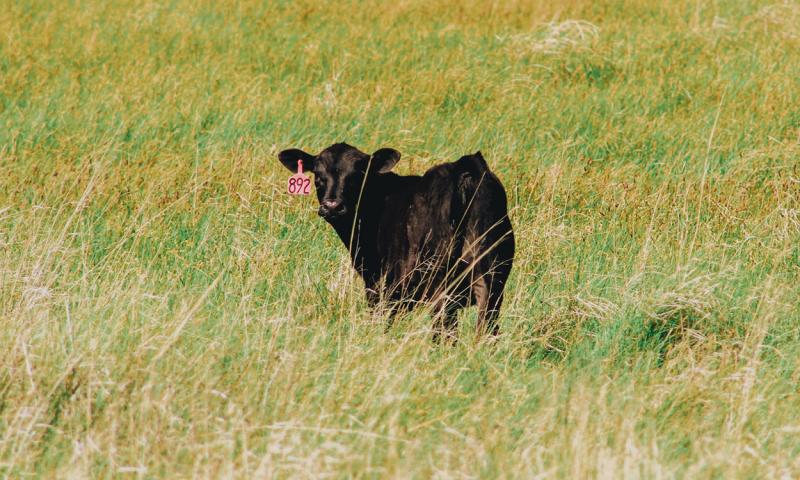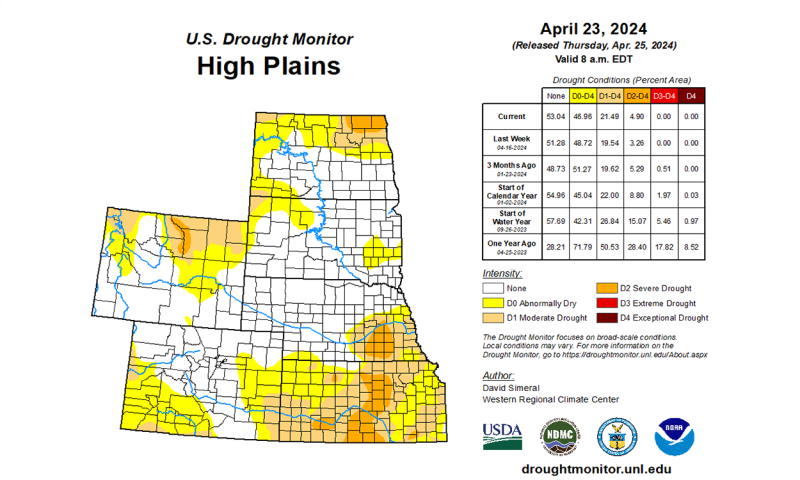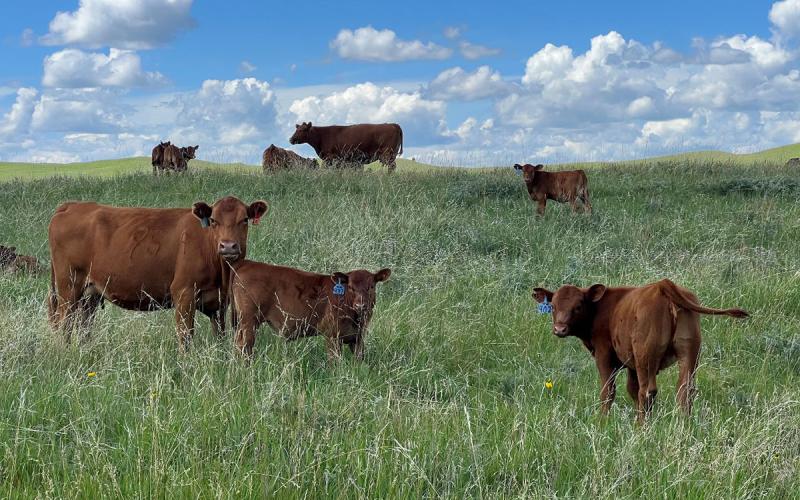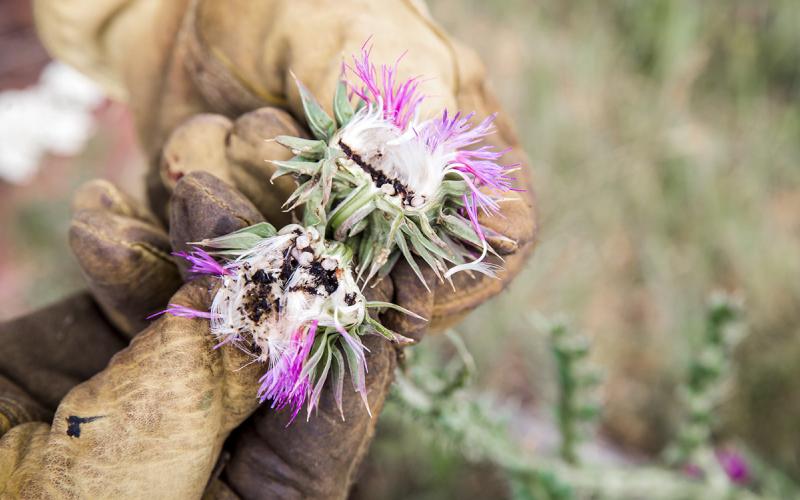Spring precipitation determines pasture production.
April through June precipitation strongly impacts forage production in the northern and central Great Plains (Smart et al., 2021). This is because most pasture growth occurs prior to July 1, particularly in areas with more cool-season grasses. As a result, spring precipitation is much more influential on forage production than mid-to-late-summer precipitation is.
If dormant-season precipitation is scarce, soil moisture can be depleted, and the spring green up can be severely compromised. If timely rains do not occur throughout the spring and early summer, forage growth can be limited. Low soil moisture and minimal spring precipitation are good indicators that stocking rates should be reduced, or turnout should be delayed for the upcoming grazing season.
Recovery time creates resilient pastures.

The impacts of dry weather are much greater for pastures in poor condition. Plant growth and carbohydrate storage are delayed when grazing occurs. Plants rely on the stored energy from carbohydrates to survive over winter and to use for their initial spring growth. This energy also supports the plant through dry conditions. Grazing without leaving enough time for recovery growth before dormancy will make the plant less resilient in dry conditions and much slower to green up in the spring.
When faced with a slow green-up or pastures that did not have adequate recovery time last year, delay spring turnout to allow proper growth before grazing. To avoid overgrazing, grass should not be grazed until it has at least reached the three-leaf stage to allow timely recovery to occur. Ideal grazing management balances the acts of grazing and recovery. Allowing plant recovery to occur before a grazing event and before the dormant season will increase resiliency for next year’s grazing season.
Make decisions sooner rather than later.
Ranchers are vulnerable to the unpredictable climate conditions in their region on any given year. Dry conditions cannot be avoided and will periodically occur. Managing cattle inventory and forage resources in combination with a written drought plan can mitigate this risk. Proactive decision making and regular monitoring are essential. See Managing Drought Risk on the Ranch for a decision-making guide and example drought plans.
Trigger Dates
Identify dates that you plan to monitor precipitation, soil moisture, and forage growth occurrence. In the northern and central Great Plains, common monitoring dates can be April 1, May 1, and June 1. These monitoring dates are also known as trigger dates. If proper climate conditions and pasture growth are not occurring around these dates, then management decisions should be triggered accordingly.
May 1 is suggested as a second trigger date to investigate the following questions:
Moisture
- How much precipitation was received during the fall and winter (dormant season)?
- How much precipitation was received in the last 4 to 6 weeks?
- How much soil moisture exists now?
Forage
- How much forage production occurred last year?
- When was the last grazing event on your pastures?
- What is the condition of your pastures (residual forage, soil cover, etcetera)?
- How much new forage production do you currently observe?
Climate
- Are there chances of precipitation in the upcoming weeks?
- What are the rapid drought indices showing now?
- What is indicated in the Climate Prediction Center 1, 2, and 3-month outlooks?
Several online tools, such as RAP Production Explorer, SD Mesonet, and the NOAA Climate Center, can assist with monitoring moisture, forage, and climate conditions. A simple guide to using these free tools is available in our article, Online Tools To Help With Rangeland Drought Planning.
Current Regional Outlook

Spring precipitation has relieved some dry areas in the Great Plains, yet many areas are still abnormally dry as of April 23, 2024. Regardless of whether your area is considered dry or not, regular monitoring of precipitation, soil moisture, and forage production should still occur.
Resources
- Forum: Critical Decision Dates for Drought Management in Central and Northern Great Plains Rangelands - ScienceDirect, Alexander J. Smart,Keith Harmoney,J. Derek Scasta,Mitchell B. Stephenson,Jerry D. Volesky,Lance T. Vermeire,Jeffrey C. Mosley,Kevin Sedivec,Miranda Meehan,Tonya Haigh,Justin D. Derner,Mitchel P. McClaran.
- Warm and Cool-Season Grasses, SDSU Extension.
- High Plains | U.S. Drought Monitor, National Drought Mitigation Center.
- Wait! Wait! Is Your Pasture Ready to Graze?, University of Nebraska-Lincoln.
- Managing Drought Risk on the Ranch, National Drought Mitigation Center.
- Options for Spring Turnout, SDSU Extension.
- Trigger Dates: Critical Decisions for Drought Management, SDSU Extension.
- Online Tools To Help With Rangeland Drought Planning, SDSU Extension.
- RAP Production Explorer, Rangeland Analysis Platform Production Explorer.
- Mesonet Homepage, Mesonet at SDState.
- Climate Prediction Center, NOAA/ National Weather Service.

